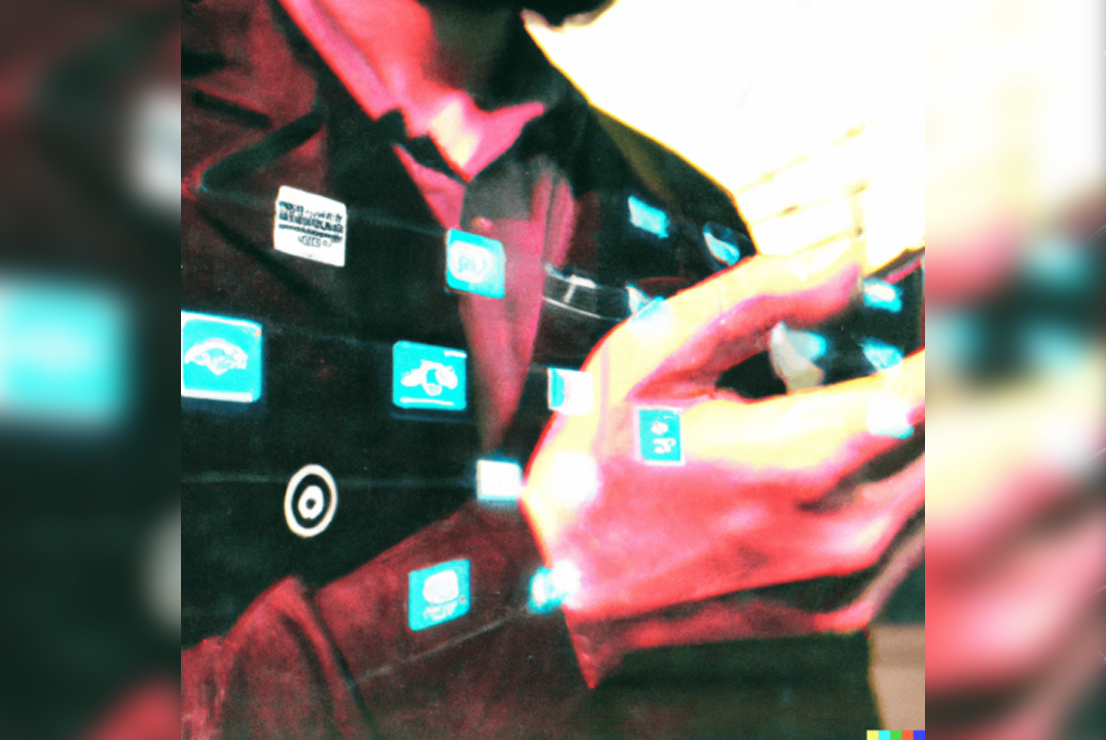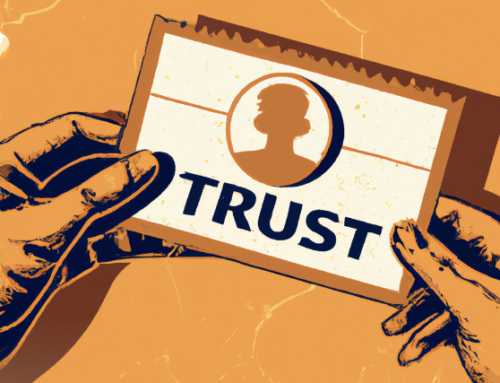By Bekkah Frisch, Marketing Executive
NFTs, which have been variously rebranded as digital collectibles, digital assets, tokens, and branded terms like Starbucks’ Journey Stamps, have gotten a bit of a bad rap. The general public has heard about Bored Apes selling for millions of dollars but they haven’t seen the value behind the technology. That’s why the future of NFTs isn’t in rampant speculation or wash trading—it’s in free or low-cost digital assets with NFT utilities that power unique benefits for the consumers who hold the assets.
Consider a ticket to a concert. They can sell for hundreds or even thousands of dollars (sorry, Swifties), but imagine if all that the general public thought they were getting was a perforated stub of paper. Values would plummet and adoption would never reach critical mass.
In the same way, NFTs will not be sustainable until brands begin to harness the technology to offer unique, interesting, and valuable rewards to people with that asset in their web 3 wallet. NFT utilities are the direction in which the market is headed.
So, for marketers interested in entering the space, here are six ways your brand can drive real business actions using the smart contract technology behind NFTs to drive NFT utilities.

NFT Airdrops
Airdrops have become a prevalent strategy in the current NFT market. In an airdrop, a brand distributes free NFTs to the wallets of individuals who already possess a branded campaign NFT. People do appreciate receiving free items, but these may just accumulate as digital clutter if they aren’t paired with some form of utility offering intrinsic value.
One approach to add value is by linking the airdropped NFTs to additional digital content, exclusive promotions, or limited time offers. By doing so, the recipients of the airdrop feel rewarded and more connected to the brand, and are more likely to engage with the brand’s other offerings.
Token-Gating
Token-gating is a groundbreaking concept in the ever-evolving world of digital marketing, specifically in the web 3 space. It involves using non-fungible tokens (NFTs) as keys to unlock exclusive content, thereby creating an added layer of value and engagement for users. At its core, token-gating leverages the power of NFTs to provide a unique and personalized experience for the audience, ensuring their loyalty and satisfaction in the long run.
Recently, the music streaming giant Spotify [link: https://decrypt.co/122040/spotify-taps-overlord-join-token-gated-playlist-pilot-creepz-nft-holders] has started experimenting with token-gating, introducing gated playlists for their listeners. This innovative approach banks on the exclusivity factor, offering users a chance to get a glimpse into the music tastes and preferences of their favorite musicians, podcasters, and celebrities. By doing so, Spotify manages to create a sense of intimacy and connection between fans and their idols, while simultaneously enhancing users’ appreciation for the platform that enables these exclusive experiences.
For brands that have already established a strong and loyal community, integrating token-gating into their digital marketing strategies can open up new avenues for engagement and communication. One way to do this is by creating a Discord server with token-gated channels, where users with specific NFTs can access exclusive content and interact with the brand on a more personal level.
By granting early access to announcements regarding new product collections, sales, or other promotional events, brands can effectively reward their most dedicated fans with a sense of privilege and exclusivity. This token-gated approach can be especially beneficial in the context of product launches, as it allows the brand’s most passionate followers to get their hands on the most anticipated products and perks ahead of the general public. This can not only boost initial sales figures but also generate a buzz around the brand, further enticing others to join the community and partake in the token-gated experience.
Token-gating represents a new frontier in digital marketing for the web 3 space. By combining the technological advances of NFTs with an effective community-building strategy, brands can create exclusive experiences that foster deeper connections with their audience. This approach is both innovative and easily accessible to anyone, regardless of their level of expertise in the digital marketing realm. By utilizing token-gating, companies can forge stronger relationships with their fans and customers, ultimately enhancing their brand’s value and longevity in the competitive online landscape.
Access to Live Events or Physical Products
Leveraging non-fungible tokens (NFTs) for providing access to live events and exclusive physical products has emerged as a groundbreaking digital marketing tactic in the web 3 space. While this approach shares some similarities with token-gating, it differs in that the NFT’s embedded smart contract serves as a ticket to unlock real-world experiences and tangible items. By seamlessly connecting the digital and physical worlds, NFTs offer unparalleled value to their holders and can greatly elevate the prestige of your brand’s campaign.
An excellent example of this innovative marketing strategy is Lamborghini’s Epic Road Trip Campaign, a grand event that lasted eight months and featured multiple NFT drops. To reward the brand’s most dedicated NFT collectors, Lamborghini offered a once-in-a-lifetime experience: an all-expenses-paid trip to their headquarters in Sant’Agata Bolognese, Italy. Participants received an exclusive guided tour of the on-site museum, where they had the opportunity to admire Lamborghini’s iconic vehicles and learn about the company’s rich history. Furthermore, they were granted the chance to meet and interact with key executives, providing invaluable networking opportunities and a truly unforgettable experience.
Another creative implementation of NFTs was undertaken by Tiffany & Co. with its NFTiff Collection [https://www.cryptotimes.io/tiffany-sells-all-250-nftiffs-for-about-50000-each/]. The prestigious jewelry company produced a limited edition of 250 intricately designed pieces, made exclusively available to Bored Ape Yacht Club (BAYC) NFT holders. These unique pendants, adorned with precious jewels, reflected various aspects of BAYC NFTs, effectively bridging the gap between digital art and physical luxury. Additionally, each physical pendant was accompanied by a digital twin— a corresponding NFT to symbolize the tangible jewelry piece. This innovative collection was met with overwhelming demand, selling out in just 20 minutes and generating an impressive $12,000,000 in revenue.
While luxury brands have been among the first to experiment with this cutting-edge web 3 marketing approach, they are far from the only ones that could benefit from it. Businesses across various industries can harness the power of NFTs to differentiate between their most passionate fans and casual followers. This enables companies to tailor their rewards and incentives to suit the loyalty levels of their customers, fostering stronger brand connections and driving long-term customer retention.
Integrating NFTs into digital marketing strategies offers a unique and engaging method for granting access to live events and exclusive physical products. This pioneering approach not only enhances the prestige surrounding your brand’s campaign but also strengthens the bond between your business and its most dedicated supporters. As we continue to witness the convergence of digital and physical worlds, NFTs are poised to play an increasingly significant role in shaping the future of digital marketing within the web 3 domain.
Co-Creation
Co-creation, the process of collaborating with your audience to develop new ideas or refine existing projects, has become an essential component of digital marketing in the web 3 era. When combined with the power of non-fungible tokens (NFTs), co-creation opens up a world of possibilities for brands to better engage with their audience. In this guide, we will explore the numerous ways co-creation can help brands deepen their connection with their audience, providing a variety of use cases to illustrate its potential.
Crowdsourcing Ideas: NFTs can be used to unlock exclusive platforms where fans can submit their creative ideas for products, campaigns, or other brand initiatives. By actively involving your audience in the ideation process, brands can foster a sense of ownership and belonging among their fans, leading to increased loyalty and advocacy.
Use Case: A fashion brand could create an NFT-based platform where fans can submit designs for a new clothing line, vote on their favorites, and even purchase the winning designs as limited-edition items.
Enhancing Content: Brands can leverage NFTs to encourage fans to contribute to the development or improvement of digital content, such as articles, videos, or podcasts. This collaborative process helps generate fresh perspectives and ideas, while simultaneously making fans feel valued and involved.
Use Case: A travel website could use NFTs to grant access to an exclusive content creation platform where fans can submit their own travel stories, tips, and experiences, with the best contributions being featured on the website or in a special edition e-book.
Collaborative Marketing Campaigns: NFT utilities can be employed to involve fans in the creation and execution of marketing campaigns, helping to generate buzz and excitement around a brand’s products or services.
Use Case: A video game developer could use NFTs to launch a marketing campaign where fans create and submit promotional material, such as posters, trailers, or social media posts, with the winning entries being used in the official campaign.
Feedback and Product Improvement: NFTs can grant access to exclusive platforms where fans can provide feedback and suggestions for product improvements or refinements, helping brands to fine-tune their offerings based on real user experiences.
Use Case: A software company could use NFTs to create a dedicated feedback platform, allowing users to report bugs, suggest new features, and vote on the most critical improvements, with the most active participants being rewarded with unique digital assets, new NFT utilities, or other perks.
Exclusive Events and Workshops: NFTs can be employed to give fans access to special events or workshops, where they can collaborate with the brand and fellow enthusiasts to learn new skills, share ideas, and create unique experiences.
Use Case: An art supplies company could host an NFT-accessible workshop where participants can learn new painting techniques, collaborate on a group mural, and receive exclusive discounts on products.
Input on Product or Company Direction
DAOs use tokens as a governance method, giving each holder a vote on all decisions related to the management of the project. Brands can deploy the same tech to give consumers a voice in specific business decisions, such as features on a new product or what discontinued product they’d like to see come back (anyone up for some McRibs?).
Not only will this give your fans deep connections to your brand that help them feel valued, it also acts as voluntary participation in market research. With cookies and other third-party data becoming more fraught with legal concerns over privacy and transparency, brands will need to find a new source for customer data. Directly asking for your customers’ input on what features or products they care about most helps ensure your brand stays aligned with its core audience using accurate, GDPR-compliant zero-party data.
NFT utilities can also be used to create a sense of exclusivity and community among loyal customers. By offering NFT holders access to private discussion forums or online groups, brands can facilitate direct communication with their most dedicated supporters. This allows customers to share their thoughts and ideas, while also enabling brands to identify common trends and preferences among their most engaged audience.
Additionally, NFTs can be employed in the realm of sustainability and corporate social responsibility. Brands can use NFT voting systems to involve customers in selecting charitable causes or environmental initiatives that the company should support. This not only demonstrates the brand’s commitment to social and environmental issues but also helps to align the company’s values with those of its customers.
NFTs can facilitate collaboration between brands and their customers through co-creation projects. By granting NFT holders the opportunity to contribute to the development of new products, services, or marketing campaigns, brands can tap into the creativity and passion of their audience. This results in more innovative and customer-centric offerings, setting the stage for long-term success and growth.
NFTs offer brands an innovative way to involve customers in decision-making processes, leading to stronger audience engagement, more accurate data collection, and more personalized brand experiences. By incorporating NFTs in various aspects of their business, companies can stay attuned to the needs and preferences of their customers, strengthening customer relations in an ever-evolving digital landscape.
Using NFT Utilities to Verify other Initiatives
The immutability of the blockchain enables brands to create digital assets that offer greater transparency and awareness of their various initiatives, even those beyond the scope of web 3. This unique feature of blockchain technology allows companies to engage with their audience in a more meaningful and innovative manner, keeping them informed and connected to the brand’s endeavors.
Take, for example, a consumer packaged goods (CPG) brand with a charitable initiative to plant trees in the rainforest based on purchases or NFT redemptions. To promote this initiative and raise awareness, the brand could create a series of bespoke NFTs featuring artwork depicting the planted trees. This not only highlights the brand’s commitment to environmental causes but also serves as a unique and engaging way to communicate with their audience.
The use of NFTs enables the brand to keep their customers informed about the progress and impact of their charitable work in real-time. By utilizing smart contract entries or Airdrops, NFT holders can receive regular updates throughout the campaign, detailing the growth of the trees, environmental remediation efforts, the impact on local wildlife, and other relevant information. This creates a dynamic and immersive experience for the audience, ensuring that the brand’s message remains at the forefront of their minds.
Moreover, NFTs provide brands with a versatile and engaging medium to tell their stories, no matter what they may entail. By creating visually appealing and informative digital assets, companies can showcase their values, initiatives, and achievements in a way that resonates with their target audience. This helps foster a deeper connection between the brand and its customers, promoting loyalty and long-term engagement.
Additionally, NFTs can serve as a catalyst for community-building and social impact. As customers collect and share these unique digital assets, they create a network of like-minded individuals who share common values and interests. This builds a sense of community and belonging, further strengthening the bond between the brand and its audience. Moreover, it encourages social sharing and word-of-mouth marketing, helping to amplify the brand’s message and reach a wider audience.
Furthermore, the use of NFTs to promote and highlight a brand’s initiatives can lead to increased consumer trust and credibility. By showcasing their commitment to environmental, social, or community causes through NFTs, brands can demonstrate their values and dedication to making a positive impact. This can differentiate the brand from its competitors and create a lasting impression on customers.
The potential applications of NFTs as a storytelling medium extend beyond environmental or charitable initiatives. Brands can leverage NFTs and NFT utilities to share behind-the-scenes insights, celebrate milestones and achievements, or even create exclusive content for their most dedicated fans. By offering these unique and engaging experiences, brands can deepen their ties with their audience and enhance customer loyalty.
The immutability and versatility of NFTs present brands with an exciting opportunity to engage with their audience in new and innovative ways. By using NFTs to showcase their initiatives, tell their stories, and create a sense of community, brands can foster deeper connections with their customers, promote loyalty, and ultimately, drive long-term success.

Conclusion: NFT Utilities Incoming
Web 3’s many potential uses for marketing initiatives have been largely unexplored as the industry has only just begun to move beyond the hype and speculation which, ironically, has negatively impacted the technology’s perceived value. The value is there for brands who are willing to apply it to telling their brand story and connecting with their audience.
The other barrier is that one-off campaigns are no longer enough to move the needle of a brand’s ROI. A successful entry into web 3 must be designed with a long-term strategy that provides ongoing value for NFT holders. This can be accomplished through the timely deployment of various NFT utilities that appeal to different segments of your brand’s audience over time.
Because of the need to plan ahead to create lasting success, brands who explore these types of campaigns must work with a proven technology provider who understands the tech and its potential from a strategic point of view. Knowledgeable, capable tech partners are critical in deploying a successful, on-brand launch into web 3.




